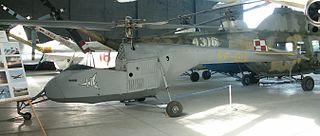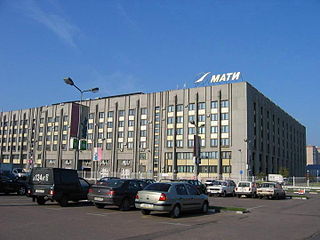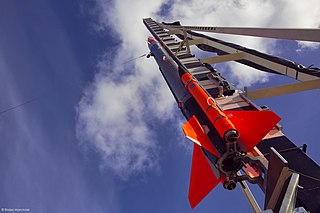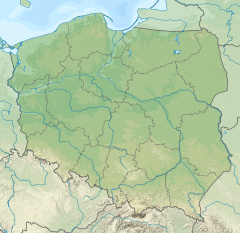GE Aerospace, a subsidiary of General Electric, is headquartered in Evendale, Ohio, outside Cincinnati. GE Aerospace is among the top aircraft engine suppliers, and offers engines for the majority of commercial aircraft. GE Aerospace is part of the General Electric conglomerate, which is one of the world's largest corporations. The division operated under the name of General Electric Aircraft Engines (GEAE) until September 2005, and as GE Aviation until July 2022. GE Aerospace's main competitors in the engine market are Pratt & Whitney and Rolls-Royce.

The German Aerospace Center is the national center for aerospace, energy and transportation research of Germany, founded in 1969. It is headquartered in Cologne with 35 locations throughout Germany. The DLR is engaged in a wide range of research and development projects in national and international partnerships. DLR also acts as the German space agency and is responsible for planning and implementing the German space programme on behalf of the German federal government. As a project management agency, DLR coordinates and answers the technical and organisational implementation of projects funded by a number of German federal ministries. As of 2020, the German Aerospace Center had a national budget of €1.348 billion.

The Nanjing University of Aeronautics and Astronautics, colloquially known as Nanhang (南航), is a public research university in Nanjing, China. One of the Seven Sons of National Defence, it is directly supervised by the Ministry of Industry and Information Technology. The university is part of the Project 211 and a Chinese state Double First Class University Plan university identified by the Ministry of Education of China.

Moscow Aviation Institute (National Research University) (MAI; Russian: Московский авиационный институт, МАИ) is one of the major engineering institutes in Moscow, Russia. Since its inception MAI has been spearheading advances in aerospace technology both within Russia and worldwide. The university laid emphasis on laboratory instruction in applied science and engineering, specific to the demands of aerospace industry.

The Air University (AU) (Urdu: جامعہ فضایہ) is a federally chartered public sector research university in Pakistan. Established in 2002, its main campus is located in the capital city of Islamabad, Pakistan. The university has two other functional campuses, Aerospace and Aviation Campus at Kamra and a campus at Multan.

The PZL I-22 Iryda, otherwise known as the PZL M93 Iryda and PZL M96 Iryda, was a twin-engine, two-seat military jet trainer aircraft developed and produced by Polish aviation company PZL Mielec.

The Khajeh Nasir Toosi University of Technology is a public research university in Tehran, Iran. It is named after medieval Persian scholar Khajeh Nasir Toosi. The university is considered one of the most prestigious institutions of higher education in Iran. Acceptance to the university is highly competitive, entrance to undergraduate and graduate programs typically requires scoring among the top 1% of students in the Iranian University Entrance Exam.

The BŻ-1 GIL was the first Polish experimental helicopter, constructed in 1950. Developed by the Main Aviation Institute (Warsaw), the only constructed GIL saw service until 1960 when it was irreparably damaged and subsequently decommissioned. The prototype aircraft currently resides at the Polish Aviation Museum.

Tadeusz Chylińnski – was a Polish airplane designer and constructor, a researcher at the Institute of Aviation in Warsaw and specialist in aircraft structures.

Embry–Riddle Aeronautical University, Prescott is a residential campus of Embry-Riddle Aeronautical University in Prescott, Arizona. The university offers bachelor and master's in arts, sciences, aviation, business, engineering, and security & intelligence. The Prescott campus also offers a master's degree in Safety Science, Security & Intelligence, and Cyber Intelligence & Security.

National Aviation University is a university located in Kyiv, Ukraine. It started in 1933 when the Kyiv Aviation Institute was founded on the basis of the mechanical department of Kyiv Machine-Building Institute. The university consists of five institutes, ten separate faculties, one Aviation Academy, two lyceums, six colleges and Military Training Department. The university has its own Culture and Arts Center, Aviation Medical Center, Flight Training Center, Training and Sports Wellness Center,Scientific and Technical Library, “Aviator” newspaper and a yacht club. The university also supports the State Aviation Museum.

Moscow State Aviation Technological University is a university in Moscow, Russia. The modern name of this university is «MATI» – Russian State University of Aviation Technology. It is named after the Russian aeronautics and rocketry pioneer Konstantin Eduardovich Tsiolkovskii. The current name of "MATI" Russian State Technological University is "MAI" Moscow Aviation Institute
Korea Aerospace University is a private university located in Goyang, Gyeonggi, South Korea.

Aerospace engineering is the primary field of engineering concerned with the development of aircraft and spacecraft. It has two major and overlapping branches: aeronautical engineering and astronautical engineering. Avionics engineering is similar, but deals with the electronics side of aerospace engineering.

Thais Russomano is a Brazilian doctor and scientific researcher specialising in space medicine, space physiology, biomedical engineering, telemedicine and telehealth. She founded the Microgravity Centre (MicroG) at PUCRS university, Porto Alegre, Brazil, in 1999, coordinating it for 18 years until 2017. The MicroG is the first educational and research centre in Space Life Sciences in Latin America. She is a senior lecturer at King's College London, lecturing in Aviation and Space related courses; coordinator of the Space Network, University of Lisbon; guest lecturer at Aalto University, Finland in Space and Design; guest lecturer at Pfarrkirchen Institute of Technology, European Campus, contributing to the MSc in Medical Informatics; consultant for the Skolkovo Foundation; member of the Mars One Advisory Board; International Relations Director for the UK-based HuSCO, Human Spaceflight Capitalization Office; and director of two private companies linked to space life sciences and telehealth – InnovaSpace Consultancy (UK) and International Space Medicine Consortium (USA).

National Aerospace University – "Kharkiv Aviation Institute", NAU "KhAI" is a university in Kharkiv, Ukraine which specializes in aviation and space engineering. The KhAI was founded in 1930.
The National Institute of Aerospace (NIA) is a non-profit research and graduate education institute headquartered in Hampton, Virginia, near NASA's Langley Research Center.
Mike Monroney Aeronautical Center is a regional office of the United States Federal Aviation Administration on the grounds of Will Rogers Airport in Oklahoma City. With around 7,500 direct federal employees, the Aeronautical Center is one of the Department of Transportation's largest facilities outside the Washington, DC area, and one of the 10 largest employers in the Oklahoma City metropolitan area. It is named for Senator Mike Monroney of Oklahoma, who wrote and sponsored the Federal Aviation Act of 1958.
Ukrainian Defense Industry, also operating as Ukroboronprom State Concern, is an association of multi-product enterprises in various sectors of the defence industry of Ukraine. The company has ceased most of its activities across Ukraine since the 2022 Russian invasion of Ukraine and has relocated much of its production abroad during the war.

ILR-33 AMBER – Polish multistage suborbital rocket designed by Warsaw Institute of Aviation – Łukasiewicz Research Network. The main goal of development of AMBER is gaining experience in building rocket engines and rockets themselves. AMBER can be used in sounding the atmosphere, performing various experiments in microgravity and as a rocket and space technologies testing platform.
















